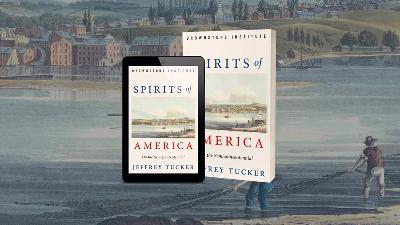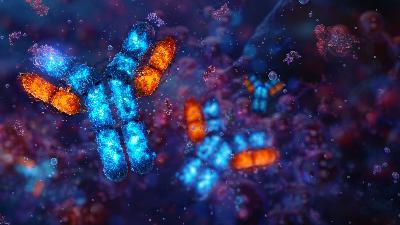The Forgotten Dry Run for Lockdown
Update: 2025-10-08
Description
By Paula Jardine at Brownstone dot org.
WE SHUT our schools, we emptied our streets, we shuttered our shops not because reason demanded it, but because fear commanded it. We followed the models, not the evidence. We fought a virus by locking down the healthy. We sacrificed livelihoods on the altar of safety. And we were told by Prime Minister Johnson: There Is No Alternative! That was the lockdown myth - a lie wrapped in panic, cloaked in science. And we complied in our homes, in our hospitals, in silence. But history will ask: was it necessary? Or was it, in the end, a fight against reason itself?
We don't need to wait for history to judge, because a central part of the pernicious lockdown myth - that an unprecedented response was justified due to the unprecedented uncertainty of an invisible threat, that biodefense experts such as Sir Jeremy Farrar and Dr Richard Hatchett told us with all the sincerity they could muster, was certainly deadly - can be easily busted.
The myth that lockdowns were unprecedented before 2020 and that the practice began when Wuhan was imprisoned on the eve of CEPI's announcement at Davos 2020 that Moderna had a newfangled vaccine ready to go into Phase 1 trials is just that: a myth. There is a precedent, and a highly instructive one at that.
The first lockdown occurred in April and May of 2009 in Mexico. That it took place little more than a decade before the Covid lockdowns makes it all the more remarkable that it has been erased from collective memory. Like the lockdowns of 2020, it was a shakedown and the fingerprints of one person, the aforementioned Dr Hatchett, are all over it. He was not a public figure in 2009 but he was a key figure advising the White House directly from his pulpit as the Director for Medical Preparedness Policy on the US National Security Council (NSC).
On April 17, 2009, the final day of President Obama's visit to Mexico, the US Centers for Disease Control and Prevention (CDC) issued an advisory after swine flu (H1N1) was detected in two Mexican-American children in California. After showing flu-like symptoms, they'd had nasal-pharyngeal swabs taken as part of a surveillance study. Neither had severe illness and both recovered but the CDC sounded the alarm anyway, saying the children had no known direct contact with pigs.
The detected viruses, said the CDC, showed resistance to existing antivirals so they were testing two new ones, GSK's Relenza (zanamivir) and Tamiflu (oseltamivir), which was developed by Gilead Sciences, a company linked to President G W Bush's former Defense Secretary Donald Rumsfeld and licensed to the Swiss pharmaceutical company Roche, to see if either of those might work should the H1N1 virus start spreading in humans.
As it was required to under the amended International Health Regulations 2005, the Mexican government reported cases of patients with severe respiratory disease to the WHO in early April and dutifully sent patient samples from these purportedly 'unusual pneumonia cases' to Canada's National Microbiology Laboratory (NML) in Winnipeg, one of the WHO Collaborating Centres for Influenza. On April 23, the NML reported detecting H1N1 swine flu. The Mexican government, which was now reporting 16 deaths from swine flu, swiftly ordered schools and businesses in Mexico City, the sprawling and densely populated capital, to close on April 24 due to the public health emergency.
As Leslie Bassett, the deputy chief of mission at the US Embassy in Mexico City in 2009, said: 'Waking up to a pandemic is like walking toward a beautiful garden and hitting a plate glass door. Without any warning, the expectations you never questioned are violently disrupted. Your brain reels, unable to process the brutal warping of reality. The British call this "gobsmacked." A health crisis professional might describe this as the prelude to a pandemic response.'
A day later, the New York Times reported that the World Health Organization (WHO) was considering raisin...
WE SHUT our schools, we emptied our streets, we shuttered our shops not because reason demanded it, but because fear commanded it. We followed the models, not the evidence. We fought a virus by locking down the healthy. We sacrificed livelihoods on the altar of safety. And we were told by Prime Minister Johnson: There Is No Alternative! That was the lockdown myth - a lie wrapped in panic, cloaked in science. And we complied in our homes, in our hospitals, in silence. But history will ask: was it necessary? Or was it, in the end, a fight against reason itself?
We don't need to wait for history to judge, because a central part of the pernicious lockdown myth - that an unprecedented response was justified due to the unprecedented uncertainty of an invisible threat, that biodefense experts such as Sir Jeremy Farrar and Dr Richard Hatchett told us with all the sincerity they could muster, was certainly deadly - can be easily busted.
The myth that lockdowns were unprecedented before 2020 and that the practice began when Wuhan was imprisoned on the eve of CEPI's announcement at Davos 2020 that Moderna had a newfangled vaccine ready to go into Phase 1 trials is just that: a myth. There is a precedent, and a highly instructive one at that.
The first lockdown occurred in April and May of 2009 in Mexico. That it took place little more than a decade before the Covid lockdowns makes it all the more remarkable that it has been erased from collective memory. Like the lockdowns of 2020, it was a shakedown and the fingerprints of one person, the aforementioned Dr Hatchett, are all over it. He was not a public figure in 2009 but he was a key figure advising the White House directly from his pulpit as the Director for Medical Preparedness Policy on the US National Security Council (NSC).
On April 17, 2009, the final day of President Obama's visit to Mexico, the US Centers for Disease Control and Prevention (CDC) issued an advisory after swine flu (H1N1) was detected in two Mexican-American children in California. After showing flu-like symptoms, they'd had nasal-pharyngeal swabs taken as part of a surveillance study. Neither had severe illness and both recovered but the CDC sounded the alarm anyway, saying the children had no known direct contact with pigs.
The detected viruses, said the CDC, showed resistance to existing antivirals so they were testing two new ones, GSK's Relenza (zanamivir) and Tamiflu (oseltamivir), which was developed by Gilead Sciences, a company linked to President G W Bush's former Defense Secretary Donald Rumsfeld and licensed to the Swiss pharmaceutical company Roche, to see if either of those might work should the H1N1 virus start spreading in humans.
As it was required to under the amended International Health Regulations 2005, the Mexican government reported cases of patients with severe respiratory disease to the WHO in early April and dutifully sent patient samples from these purportedly 'unusual pneumonia cases' to Canada's National Microbiology Laboratory (NML) in Winnipeg, one of the WHO Collaborating Centres for Influenza. On April 23, the NML reported detecting H1N1 swine flu. The Mexican government, which was now reporting 16 deaths from swine flu, swiftly ordered schools and businesses in Mexico City, the sprawling and densely populated capital, to close on April 24 due to the public health emergency.
As Leslie Bassett, the deputy chief of mission at the US Embassy in Mexico City in 2009, said: 'Waking up to a pandemic is like walking toward a beautiful garden and hitting a plate glass door. Without any warning, the expectations you never questioned are violently disrupted. Your brain reels, unable to process the brutal warping of reality. The British call this "gobsmacked." A health crisis professional might describe this as the prelude to a pandemic response.'
A day later, the New York Times reported that the World Health Organization (WHO) was considering raisin...
Comments
In Channel























